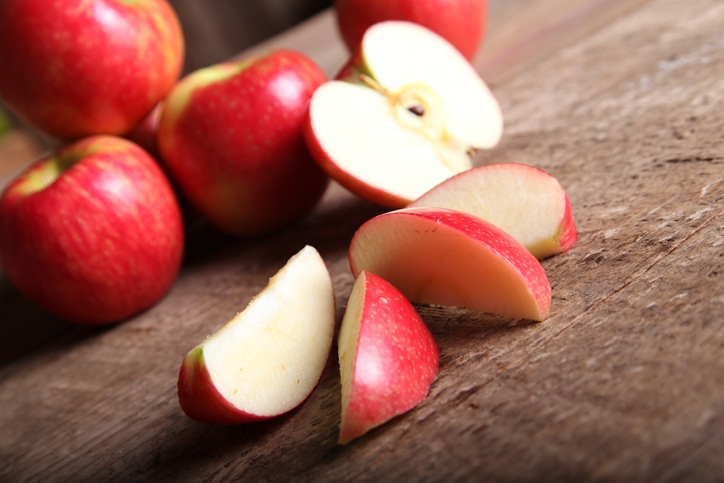The Browning Apple
 Photo: © iStock-132027480
Photo: © iStock-132027480 - Resource Type
- Experiment
- Subjects
- Chemistry
- Topics
- Ecosystems Health Scientific Inquiry
- Time for activity
- 75 Minutes
Liquids all around us may be acidic or basic (alkaline) or neutral in their properties. For examples, acids taste sour; while bases taste bitter and feel slippery. However, both strong acids and strong bases can be very dangerous and burn our skin. So, it is very important to be very careful when using such chemicals. In order to measure how acidic or basic a liquid is, chemist use pH scale.
- Introduction
-
Liquids all around us may be acidic or basic (alkaline) or neutral in their properties. For examples, acids taste sour; while bases taste bitter and feel slippery. However, both strong acids and strong bases can be very dangerous and burn our skin. So, it is very important to be very careful when using such chemicals. In order to measure how acidic or basic a liquid is, chemist use pH scale. pH scale ranges from 1 to 14, where 1 to 6 is classified as acidic, 7 neutral (neither a base nor an acid) and 8 to 14 is classified as base. pH paper or universal indicators are used to determine if a solution is acid, base or neutral. Natural indicator like juice from red cabbage is used as pH indicator to determine pH values by observing color changes.
- Key Objectives
-
- To explore the chemical reaction behind apple browning.
- To understand enzyme in the fruits reacts with oxygen in the air to tern fruits brown.
- To understand how fruits can be protected from browning using natural acidic juice such as lime.
- To get the idea of natural preservation of fruits.
- Guiding Questions
-
- Have you noticed what happens to fruit – like apples – if it is cut and left in the air?
- Do you see this with all fruit? how about vegetables? Other fruit?
- Is brown apple safe to eat? or does it go to waste?

/rating_on.png)
/rating_off.png) (6 )
(6 )





